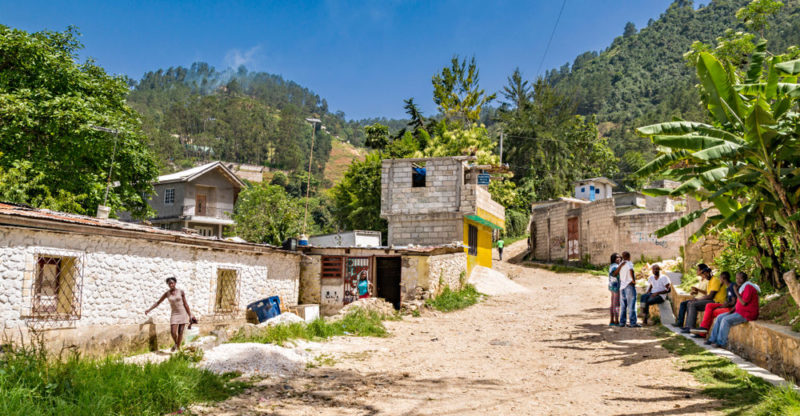We explain what poverty is, the types that exist and how it is measured. Also, what are its characteristics, causes and consequences.
What is Poverty?
Poverty is understood as the social and economic condition of lack of resources (or the lack of tools to acquire them), which allow satisfying the minimum physical and mental needs for an adequate standard of living, such as food , housing, assistance sanitation, access to basic services ( electricity , drinking water , telephone line) and formal education .
There are various factors involved in poverty, as well as different ways of measuring it, but in general terms it is understood from the lack of means to acquire the essential resources for life , as is the case of unemployment, lack or low level of income, or conditions of significant marginalization and social exclusion that make social ascent and integration on equal terms with the whole of society very difficult .
Poverty is one of the main social ills in the world and other scourges and difficulties in the development of nations are attributed to it, as well as the construction of a world of profound inequalities. However, there do not seem to be unanimous methods to combat it.
See also: Basic needs .
Poverty Concept
Poverty is difficult to define. Etymologically, the word comes from the Latin pauperos , a word that was used for cattle that gave birth little or for soil that was not very fertile. Therefore, it is a word linked from early on with scarcity and deprivation.
In general, it is associated, in capitalist society, with the lack of economic resources or the tools to obtain them ; but in reality it goes far beyond the simple lack of capital.
Types of poverty

A distinction is commonly made between critical poverty and extreme poverty, based on the number of vital deprivations suffered, as follows:
- Critical poverty. Critical poverty is that suffered by citizens who cannot meet the basic consumption basket, made up of food and vital basic services. It is the one that invests all its capital exclusively in food.
- Extreme poverty. Considering the latter as an even lower step, in this instance individuals cannot even access the basic food basket, that is, they cannot even consume a basic amount of daily calories. Homelessness is at this level.
On the other hand, the measurement of poverty distinguishes, according to its socioeconomic context, between absolute poverty and relative poverty.
- Relative poverty. It is considered from its immediate socioeconomic environment, be it a city , a region, a country or a continent . This is because the economic and social terms of one place may be very different from those of another and may not be directly comparable.
- Absolute poverty. Absolute poverty is a general measurement and seeks to establish uniform criteria that are generally located in the minimum consumption basket to distinguish the poor from the rest of society.
Poverty Measurement
There are different ways of measuring poverty. The most traditional was proposed by the World Bank and involves dividing the Gross Domestic Product of a country (GDP) by the number of inhabitants it has. Those whose income is below that national standard will be considered poor.
The World Bank estimates since 2015 that the universal poverty line is 3.10 dollars a day and the critical poverty line is 1.90 dollars a day.
This merely economic method has been criticized for not really reflecting the dimensions of what it means to be poor, reducing it only to the lack of capital.
For this reason, measurement in terms of the Human Development Index proposed by the UN is preferred , in which other factors are taken into account, such as the margin of literacy, access to basic services (such as water or electricity), access to health, among others.
Causes of poverty

Poverty does not have simple determined causes but is the consequence of a series of conditions of historical, social and cultural construction.
Some theorists accuse the imperial history of the European nations , which plundered and colonized the other continents, as the cause of their entering the modern world in very unequal conditions and economic dependence, which translates into considerable margins of poverty.
On the other hand, poverty usually implies significant educational deficiencies , including sexual and reproductive education. Thus, the poorest populations are more prone to early pregnancy and unplanned family, which limits their chances of overcoming and restarts the cycle of marginalization and poverty.
Finally, wars and territorial conflicts often leave those who suffer from them, be they refugees, migrants or survivors, destitute and often reduced to conditions of poverty that cannot be overcome for several generations in the future.
Consequences of poverty

Poverty has notorious consequences in nations and societies, such as:
- Crime and drugs . Poverty is not directly linked to crime and drugs, but it is true that being in desperate and marginalized conditions, the poor are more likely to accept illegal businesses in exchange for a higher economic income.
- Malnutrition . Especially in the child population, which raises infant mortality rates.
- societal resentment Social exclusion generates resentment and that resentment can turn into urban violence, massive support for populist leaders or other mass phenomena.
- Pandemics. Extreme poverty, medically neglected and with little access to public health, can be a breeding ground for the appearance of massively contagious diseases.
- Low human development. Populations with high margins of poverty have slower markets , less investment in culture and, in general terms, less development as a society.
Global poverty rates
The World Bank measurement carried out in 2012 showed the following figures of world poverty:
- In developing countries , poverty is around 22.43%, which implies a relative improvement compared to 52.16% in 1981.
- 2 billion people in the world lack access to medicine and suffer from anemia.
- More than 1,000 million people in the world live in extreme poverty, without adequate housing, and 70% of them are women.
- More than 1.8 billion people lack access to clean water.
- Some 100,000 people die of hunger every day.
Poorest countries by GDP

The poorest countries on each continent are, according to the World Bank (2012):
- Central America and the Caribbean. Haiti and Nicaragua .
- South America . Bolivia , Paraguay and Guyana.
- Africa . Democratic Republic of the Congo, Liberia, Zimbabwe.
- Asian . Afghanistan, Nepal , Burma.
- Europe . Moldova, Armenia, Georgia.
- Oceania . Solomon Islands, Fiji, Vanuatu.
Poorest countries according to HDI
According to the United Nations Human Development Index (2014), the poorest countries are:
- Central America and the Caribbean. Haiti, Nicaragua and Honduras.
- South America. Guyana, Bolivia, Paraguay.
- Africa. Niger, Democratic Republic of Congo and Central African Republic.
- Europe. Modalvia, Albania and Armenia.
- Oceania. Solomon Islands, Papua New Guinea, Kiribati.
Fight against poverty

Numerous world organizations combat poverty through large-scale aid initiatives, ranging from educational plans (such as those of UNICEF), medical and food aid (especially to refugees, by the UN) , or simply economic tutelage and international aid.
However, the inequality between the nations of the first and third world is of such significant magnitudes that there is no simple solution to poverty.
Cultural assessment
Poverty is normally seen as a social problem and a defect , from early times. It is associated with bad taste, with vulgarity and licentious customs (theft, addictions, prostitution), as well as with disadvantaged ethnic groups and races in the hegemonic imaginary.
However, traditions such as Christianity and Eastern mysticism have seen a value in the vow of poverty, as it means the renunciation of material possessions and ambitions , necessary for spiritual elevation.
The above content published at Collaborative Research Group is for informational and educational purposes only and has been developed by referring reliable sources and recommendations from technology experts. We do not have any contact with official entities nor do we intend to replace the information that they emit.














